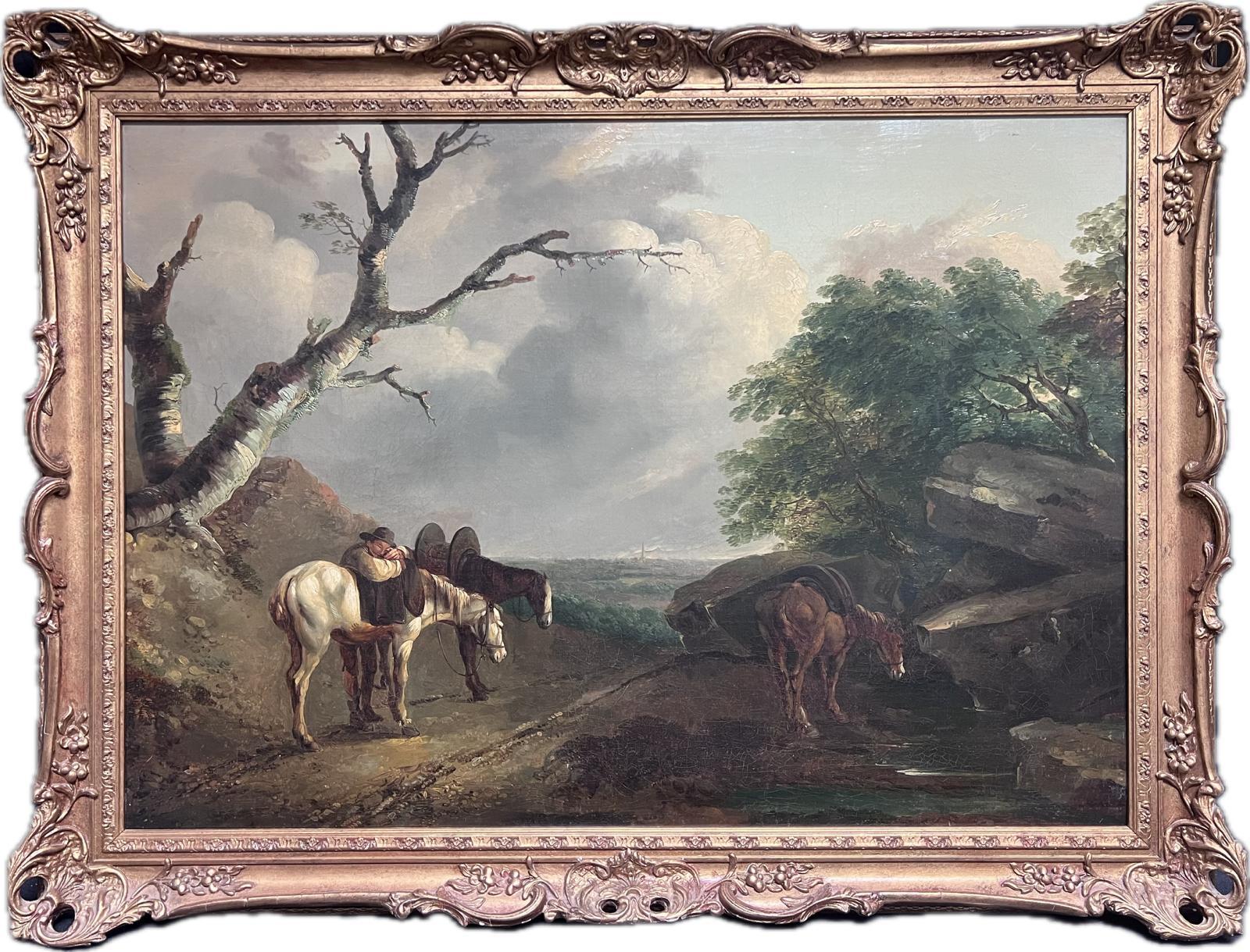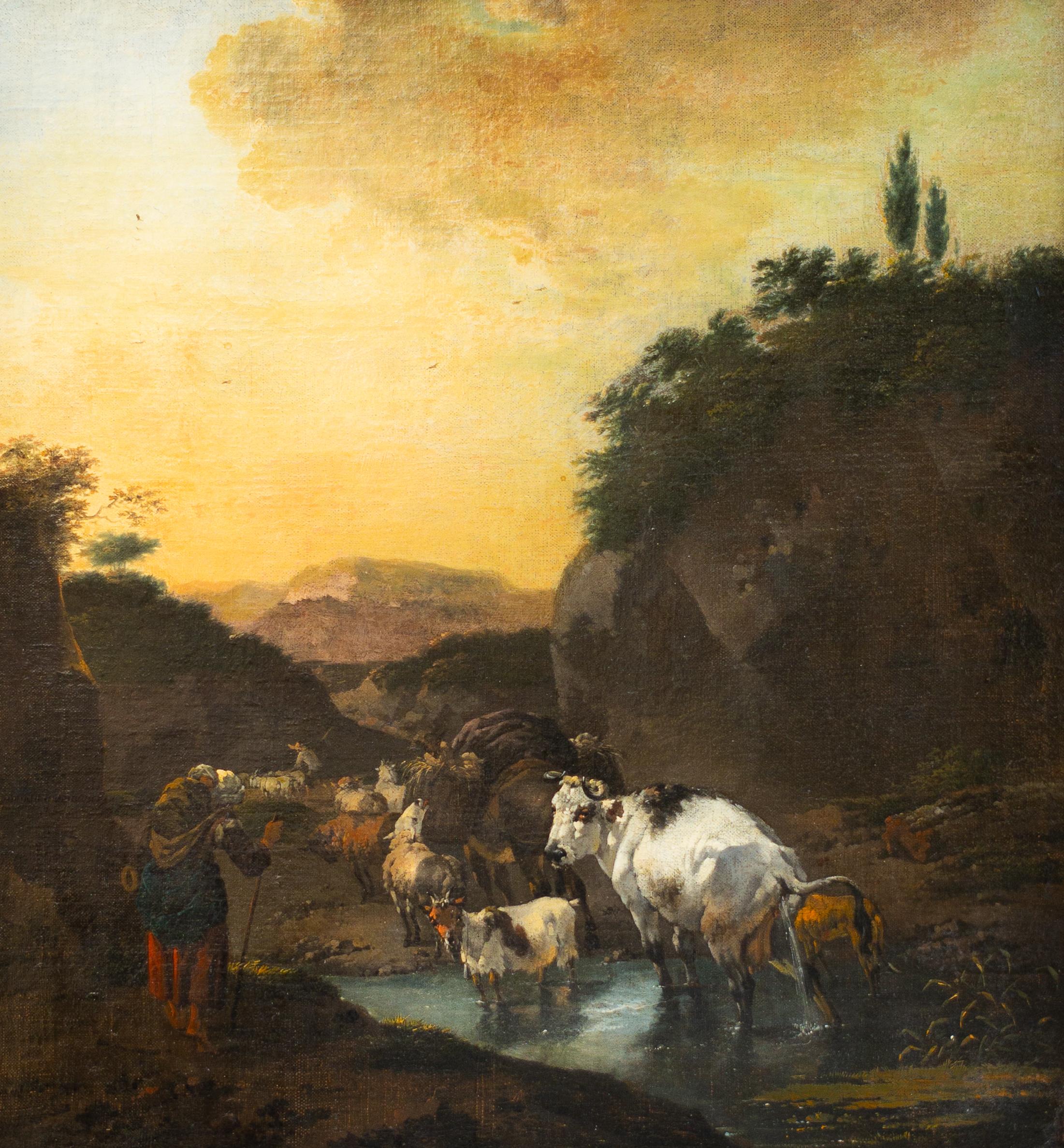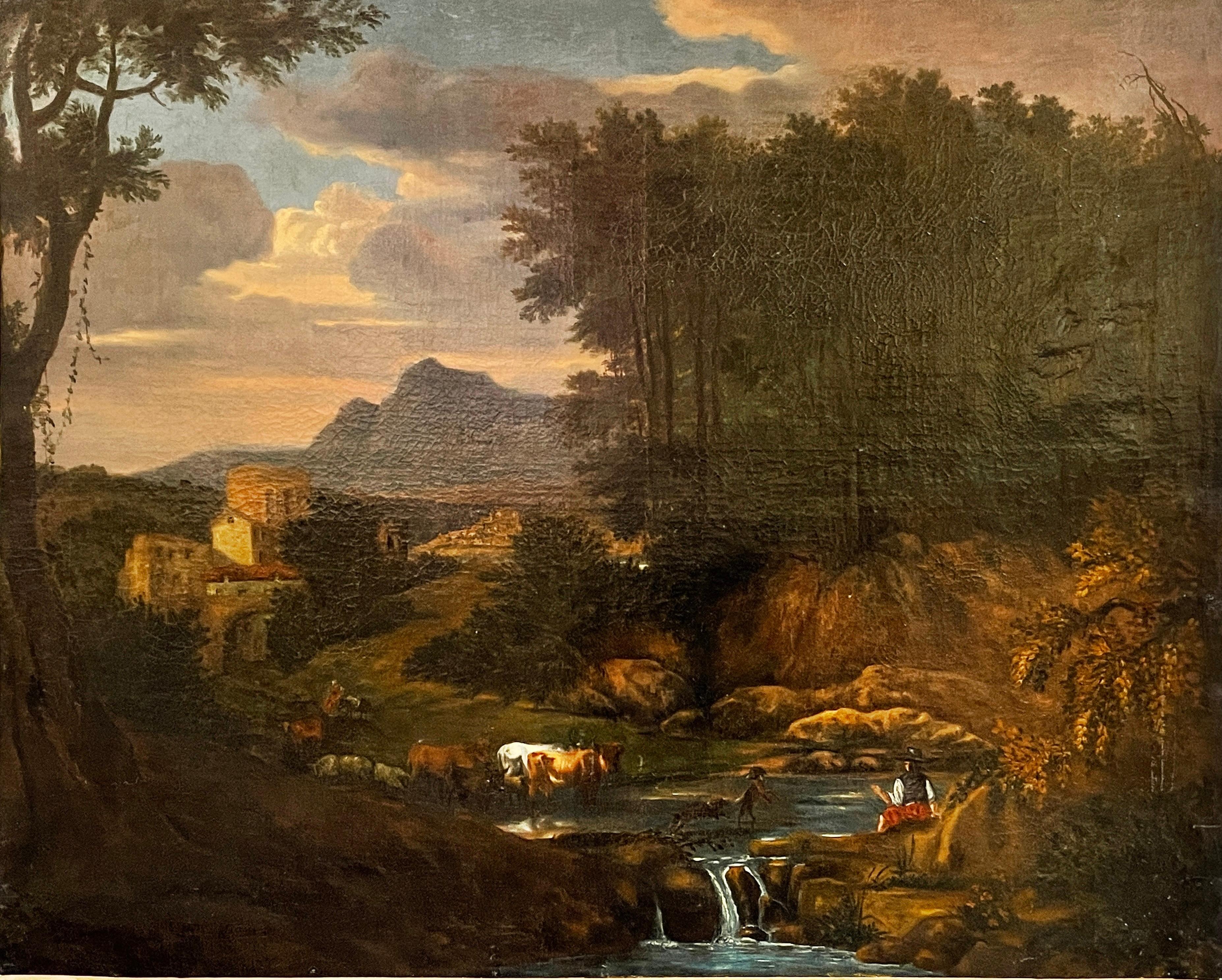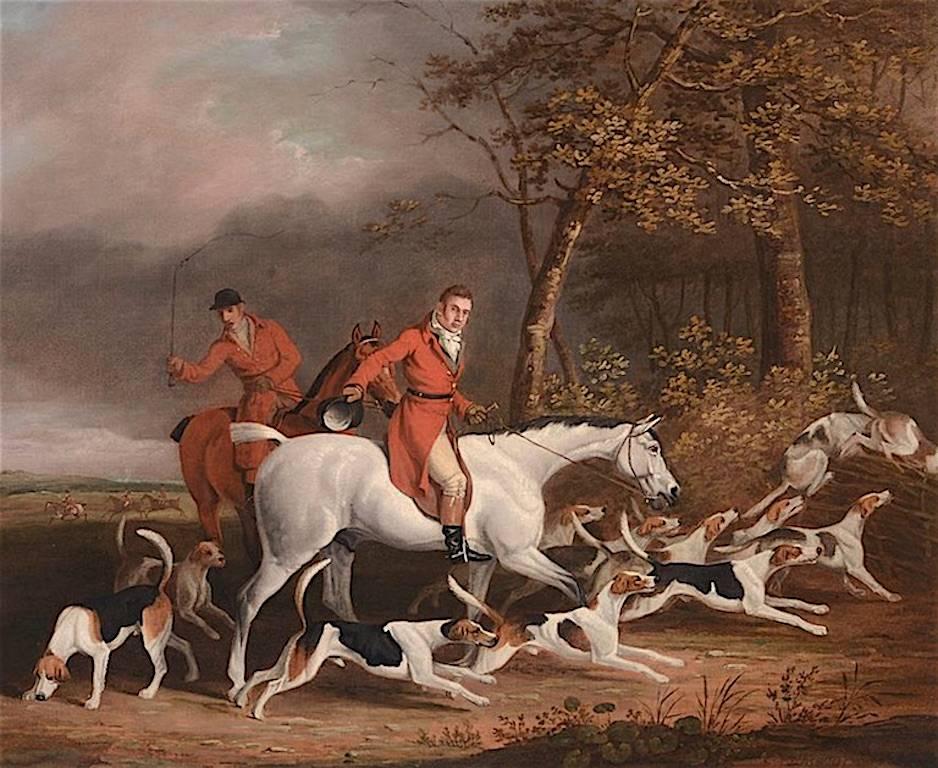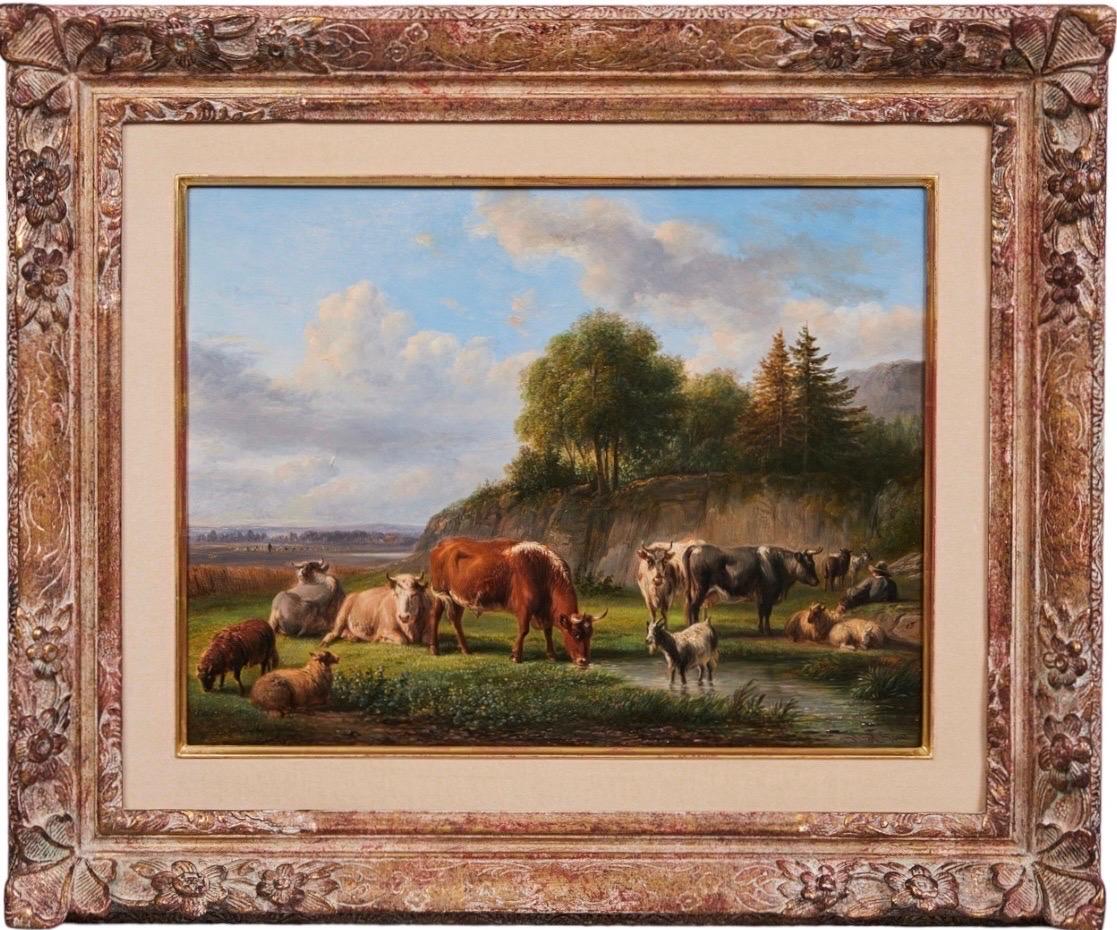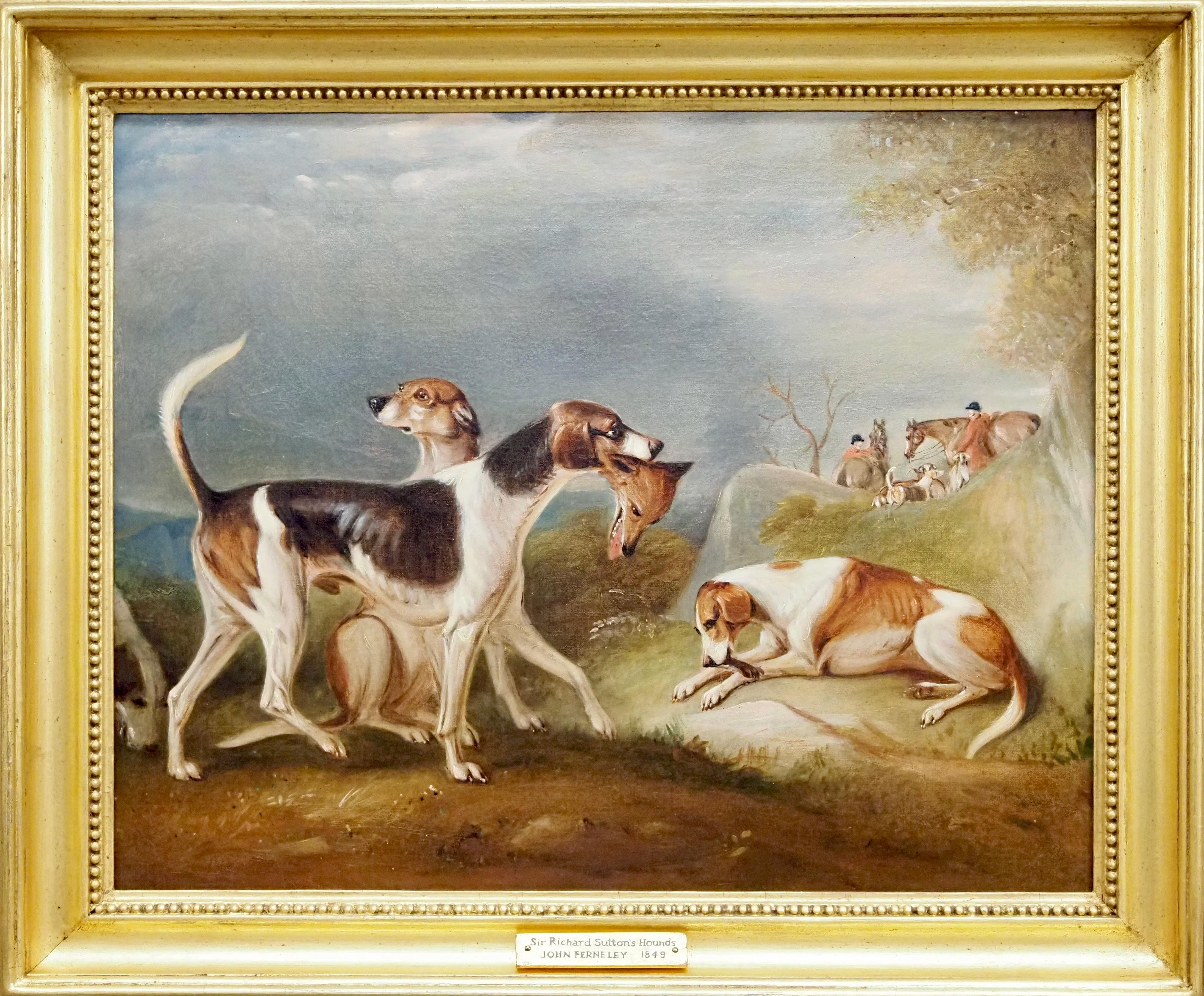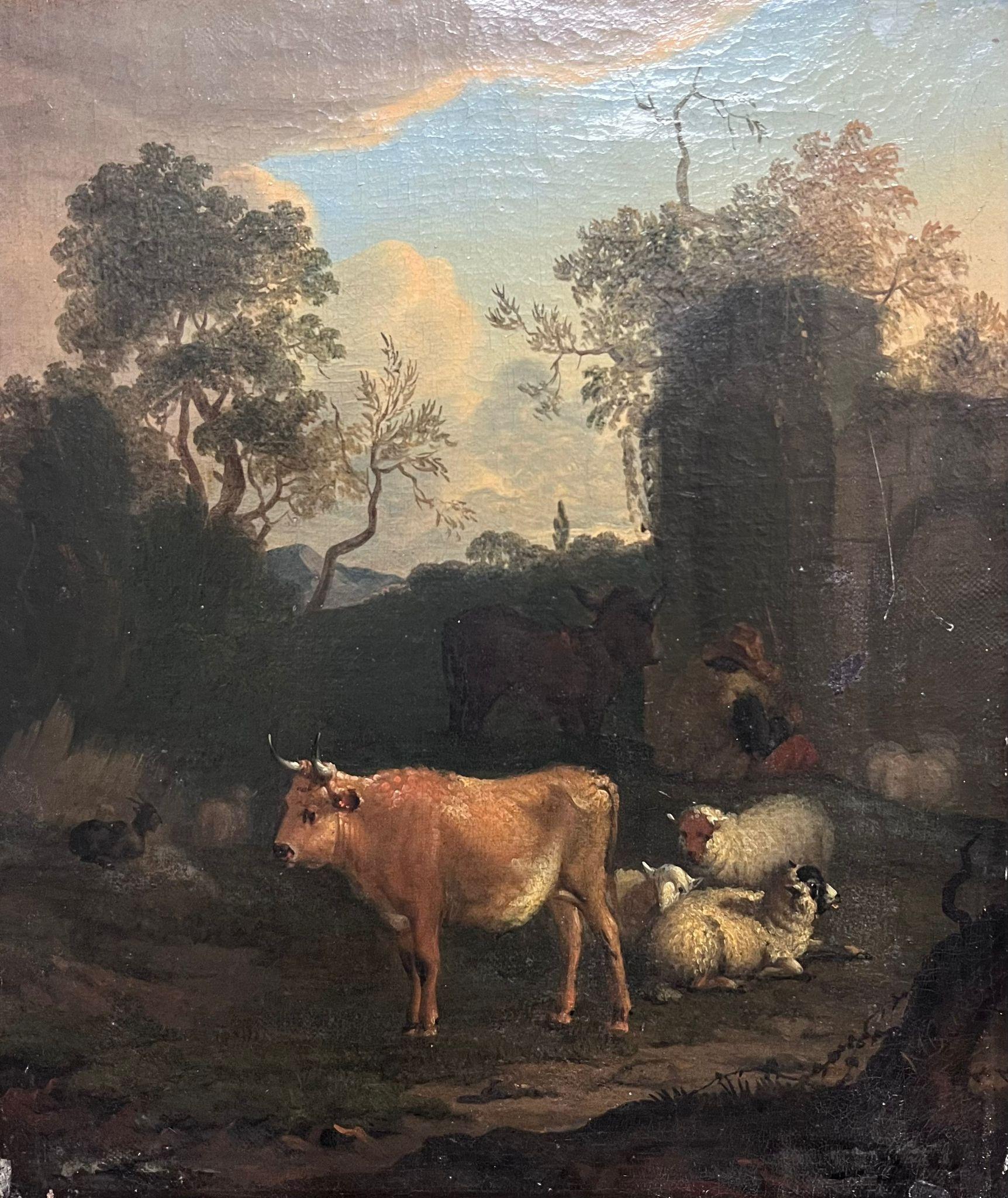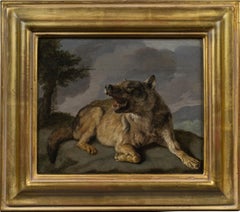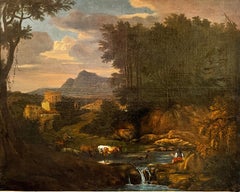
Sheep in an Open Landscape - British Old Master oil painting mountains
Want more images or videos?
Request additional images or videos from the seller
1 of 13
Thomas Sidney CooperSheep in an Open Landscape - British Old Master oil painting mountains1850
1850
About the Item
- Creator:Thomas Sidney Cooper (1803 - 1902, British)
- Creation Year:1850
- Dimensions:Height: 28 in (71.12 cm)Width: 36 in (91.44 cm)
- Medium:
- Movement & Style:
- Period:
- Condition:
- Gallery Location:London, GB
- Reference Number:1stDibs: LU85313619282
About the Seller
5.0
Platinum Seller
These expertly vetted sellers are 1stDibs' most experienced sellers and are rated highest by our customers.
1stDibs seller since 2018
397 sales on 1stDibs
More From This SellerView All
- Arcadian Italian Landscape - Old Master 17thC French oil painting herdsman sheepBy (Attributed to) Gaspard DughetLocated in London, GBA delicate oil on canvas landscape capriccio of an Arcadian landscape with figures and sheep and goats in the foreground. A stormy sky and blasted tree populate the landscape and the...Category
17th Century Old Masters Landscape Paintings
MaterialsOil
- Shepherd with Animals in Landscape - Dutch Old Master art pastoral oil paintingBy Nicolaes BerchemLocated in London, GBThis lovely Dutch Old Master oil painting is attributed to noted Dutch artist Nicholaes Berchem. Painted circa 1665 it is a charming pastoral scene of a shepherd and his animals including sheep, goats, donkey and cows and of course his trusty dog. They are all resting beneath trees while he looks on attentively. The light in the sky and the light and shadows on the animals is beautiful. A really superb example of Dutch Old Master art with great detail. Provenance. Surrey estate. Christies stamp verso. Condition. Oil on canvas, 38 inches by 32 inches and in good condition. Frame. Housed in a complementary gilt frame, 46 inches by 30 inches and in good condition. Nicolaes Pieterszoon Berchem (1620-1683) was a highly esteemed and prolific Dutch Golden Age painter of pastoral landscapes, populated with mythological or biblical figures, but also of a number of allegories and genre pieces. He was a member of the second generation of "Dutch Italianate landscape" painters. These were artists who travelled to Italy, or aspired to, in order to soak up the romanticism of the country, bringing home sketchbooks full of drawings of classical ruins and pastoral imagery. His paintings, of which he produced an immense number, (Hofstede de Groot claimed around 850, although many are misattributed), were in great demand, as were his 80 etchings and 500 drawings. His landscapes, painted in the Italian style of idealized rural scenes, with hills, mountains, cliffs and trees in a golden dawn are sought after. Berchem also painted inspired and attractive human and animal figures (staffage) in works of other artists, like Allaert van Everdingen, Jan Hackaert, Gerrit Dou, Meindert Hobbema and Willem Schellinks. Born in Haarlem, he received instruction from his father Pieter Claesz, and from the painters Jan van Goyen, Pieter de Grebber, Jan Baptist Weenix, Jan Wils and Claes Cornelisz. Moeyaert. According to Houbraken, Carel de Moor told him that Berchem got his name from two words "Berg hem" for "Save him!", an expression used by his fellows in Van Goyen's workshop whenever his father chased him there with the intent to beat him. No trip or Grand Tour by Berchem was documented by Houbraken though he mentioned another story about the "Berg hem!" nickname which came from Berchem's conscription as a sailor; the man in charge of impressment knew him and sent him ashore with the words "Save him!". Today his name is assumed to come from his father's hometown of Berchem, Antwerp. According to the RKD he traveled to Italy with Jan Baptist Weenix, whom he called his cousin, in 1642–5. Works by him are signed both as "CBerghem" and "Berchem". In 1645 he became a member of the Dutch reformed church and married the year after. According to Houbraken he married the daughter of the painter Jan Wils, who kept him on a short allowance, but to finance his collection of prints he would borrow money from his pupils and colleagues and pay them back from the proceeds of paintings that he didn't tell her about. Around 1650 he travelled to Westphalia with Jacob van Ruisdael, where a dated piece showing Burg Bentheim is recorded. Maybe Berchem went to Italy after this trip and before he moved to Amsterdam - he is not clearly documented in the Netherlands between 1650 and 1656. Around 1660 he worked for the engraver Jan de Visscher designing an atlas. In 1661-1670 he is registered in Amsterdam and in 1670 he moved back to Haarlem, but was living back in Amsterdam by 1677, where he died in 1683. He was a popular teacher and his pupils were Abraham Begeyn, Johannes van der Bent, his son Nicolaes, Isaack Croonenbergh, Simon Dubois, Karel Dujardin, Johannes Glauber, Pieter de Hooch, Jacob van Huchtenburg, Justus van Huysum...Category
17th Century Old Masters Landscape Paintings
MaterialsOil
- Golden Age Sheep and Goat in a Landscape - Dutch 17thC Old Master oil paintingLocated in London, GBAbraham Begeyn, Dutch Golden Age painter and Prussian court painter painted this wonderful 17th century Old Master oil painting. Painted circa 1690 and signed lower right, the subjec...Category
1690s Old Masters Landscape Paintings
MaterialsOil
- Portrait of a Hunter Horse in a Landscape - British Old Master art oil paintingLocated in London, GBThis lovely British Old Master oil painting is by noted Exeter born artist Thomas Mogford of Exeter. Painted in 1834 it is a portrait of a white hunter horse i...Category
1830s Old Masters Animal Paintings
MaterialsOil
- Cattle and Drover in a Landscape - British Victorian art landscape oil paintingLocated in London, GBThis gorgeous oil on canvas Victorian Old Master painting is by British artist Henry Jutsum. Painted circa 1850 the painting depicts a drover on horse back bringing up the rear behin...Category
19th Century Old Masters Landscape Paintings
MaterialsOil
- Peacock and Birds in a Landscape - British 17thC Old Master animal oil paintingBy Marmaduke CradockLocated in London, GBThis stunning British Old Master oil painting is attributed to circle of noted bird painter Marmaduke Cradock. Painted circa 1690 it is an excellent example and the sort of collection of birds he loved to paint - a peacock, wild turkeys, a jay in the foreground and doves, all set in a beautiful landscape. A variant of this painting is now in The Tate collection. Unlike many artists, he preferred to paint live birds with all their passions, joys and quarrels. The artist has perfectly capture the dynamics between this group, especially the dove and jay, as they all begin to settle down in the twilight. The colouring and brushwork are superb making this a fantastic British Old Master bird oil painting in a stunning carved gilt frame. Provenance. London estate. Condition. Oil on canvas, 42 inches by 39 inches and in good condition. Frame. Housed in a magnificent complementary period carved and gilded frame, 50 inches by 47 inches and in good condition. Marmaduke Cradock (1660-1716) was an English painter of birds and animals. Some older sources give his first name as Luke. Cradock was an English painter, noted for his depictions of birds, dead game, and other animals. He was born in Somerton, Somerset and moved to London, where he served an apprenticeship to a house-painter. He was, however, self-taught as an artist, becoming skilled in the depiction of birds and animals. Horace Walpole wrote that "I have seen some pieces by his hand which he painted with a freedom and a fire that entitled them to more distinction". According to Walpole, Cradock deliberately shunned aristocratic patronage. He worked in general by the day, and for dealers who retailed his works; possessing that conscious dignity of talent which made him hate to be employed by men whose birth and fortune confined his fancy, and restrained his freedom. According to the RKD his work as a still life and bird painter was influenced by Melchior d'Hondecoeter, Peter Frans Casteels, and Jakob Bogdani. Sketches in the collection of the British Museum indicate that he based at least some of the birds in his paintings on drawings from life. He tended to paint domestic birds and common wild species, rather than the exotic varieties favoured by some other artists. He sometimes introduced elements of drama such as attacks by predatory animals into his bird paintings, a feature shared with the works of Francis Barlow...Category
17th Century Old Masters Animal Paintings
MaterialsOil
You May Also Like
- A WolfLocated in New York, NYProvenance: The Marchesi Strozzi, Palazzo Strozzi, Florence Sale, Christie’s, London, May 20, 1993, lot 315, as by Carl Borromaus Andreas Ruthart...Category
17th Century Old Masters Animal Paintings
MaterialsCanvas, Paper, Oil
- Shepherd with Sheep, Cows and a Goat in a Landscape by Jan Frans SoolmakerLocated in Stockholm, SEJan Frans Soolmaker (Flanders 1635‑1685) Shepherd with Sheep, Cows and a Goat in a Landscape oil on relined canvas canvas size 56 x 53 cm frame i...Category
17th Century Old Masters Animal Paintings
MaterialsOil, Canvas
$5,323 Sale Price25% OffFree Shipping - Huge 18th Century Italian Old Master Oil Painting Figures & Animals ArcadianLocated in Cirencester, GloucestershireThe Arcadian Landscape Italian School, 18th century oil painting on canvas, unframed canvas size: 32 x 40 inches condition: excellent condition for its age, fully restored. provenance: from a private collection in Paris, France. Large scale classical 18th century Italian Old Master...Category
Early 18th Century Old Masters Landscape Paintings
MaterialsOil, Canvas
- Gimcrack with jockey up, wearing the colours of 1st Earl GrosvenorLocated in Stoke, HampshireJohn Nost Sartorius (London 1759-1828) Gimcrack with jockey up, wearing the colours of Richard Grosvenor, 1st Earl Grosvenor Inscribed and signed 'Gi...Category
18th Century Old Masters Animal Paintings
MaterialsOil
- Lord Derby's Foxhounds, A English Hunting Scene by James BarengerBy James BarengerLocated in Lincoln, GBJames Barenger the younger (1780-1831) ‘Lord Derby's foxhounds’ signed and dated 'J. Barenger. 1809-' (lower right) oil on canvas 25 x 30 in. (63.5 x 76.2 cm.) Barenger was born in Kentish Town, London, the son of James Barenger Snr., a metal chaser and artist who exhibited paintings of insects...Category
19th Century Old Masters Animal Paintings
MaterialsOil
$24,472 Sale Price44% Off - 19th Century Oil painting of horses - Mares and Foals in a LandscapeBy Daniel ClowesLocated in London, GBDaniel CLOWES (1774-1829) after George Stubbs Mares and Foals in a Landscape oil on canvas 29 x 33 inches, inc.frame Daniel Clowes lived and worked in Chester all his life and ...Category
19th Century Old Masters Animal Paintings
MaterialsOil
Recently Viewed
View AllMore Ways To Browse
Victorian Oil Paintings Of Sheep
Sir Thomas Lawrence
17th Century Sheep Painting
Thomas Sidney Cooper
Portraits Of Cats
Oil On Canvas Dog Art
Old Painting Of Bird
Butterfly Canvas
Portrait With Dog
Cat Animal Paintings
Hunt Slonem Butterflies
Hunt Slonem Butterfly
Slonem Butterfly
Slonem Butterflies
Bird P
Contemporary Bunny Painting
Hunting Oil Painting
Hawaii Landscape Painting
